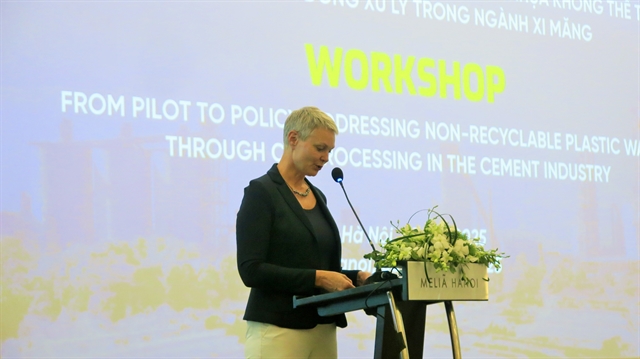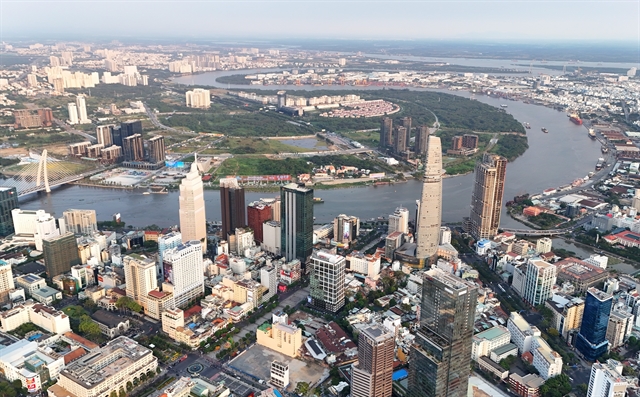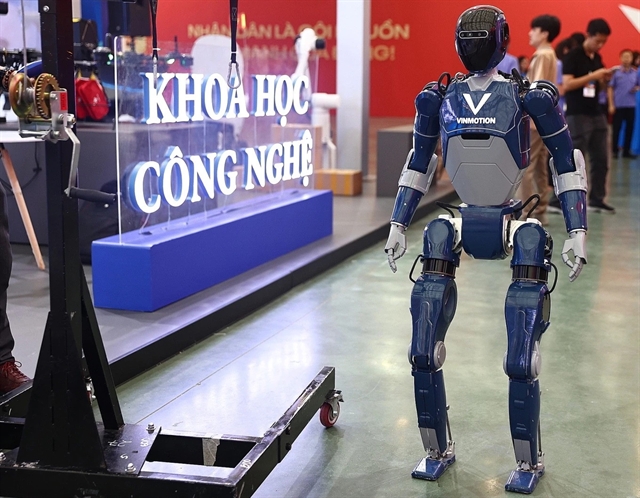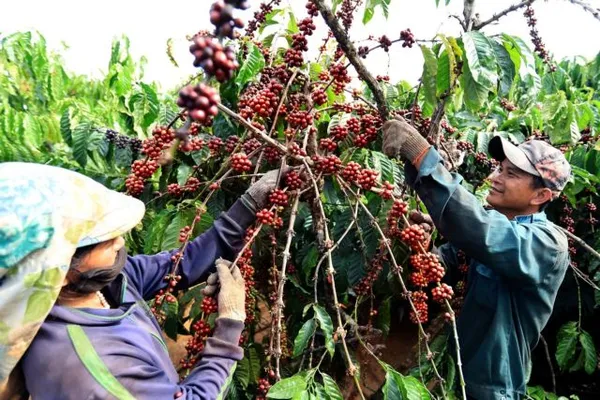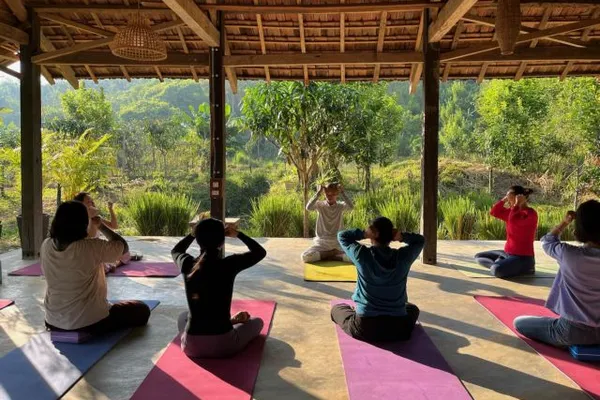 Travel
Travel
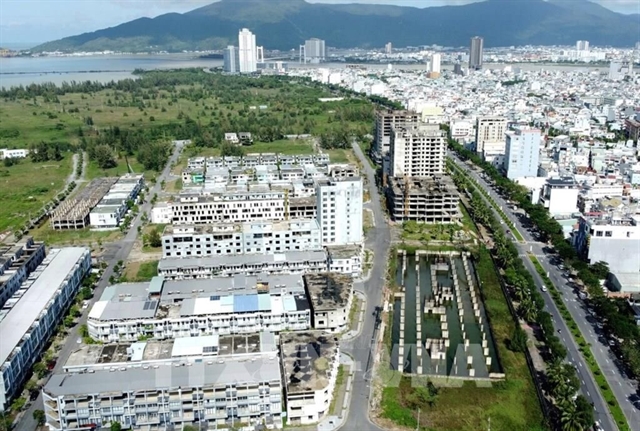
Wandering of streets of Fukuoka, where you may find yourself thrilled and immersed by the city’s mix of modern and traditional elements.
 |
| A corner of the Suikyō Shrine in downtown Fukuoka. |
by Hoàng Anh
When asked about travelling to Japan most people I know would mention either Tokyo or Kyoto. It would certainly be an exciting trip for those who want to jump in and have a taste of the crazy modern lifestyle in the country’s largest metropolis, or a soul-soothing experience watching the sunset over the rooftops of ancient temples and castles in the former capital town. There is, however, a choice for travellers that blends a Japanese city experience with an array of authentic and traditional encounters.
Fukuoka, the capital city of Fukuoka Perfecture, holds the answer to such a question.
Unique blend
The city is made up of two former towns: the Fukuoka castle town on the west bank of the Naka River and Hakata, one of the oldest towns in Japan, on the east. The two were merged in 1899 and visitors may still find many places throughout the city that retain their old names, such as the numerous landmarks on the Hakata side of town.
This distinguishing characteristic is reflected in the town’s layout and its various buildings. Standing on the bank of the Naka, visitors will find more modern buildings on the east side closer to the city’s new facilities, including the Fukuoka Airport and the Hakata Railway Station.
On the west side, they will find ancient shrines and the ruins of the Fukuoka castle. The unique blend of urban and traditional Japanese structures makes for a refreshing and thrilling journey as visitors explore the city. It can feel like one is part of a fictional universe, stumbling across an ancient Shinto shrine surrounded by skyscrapers on busy commercial streets.
One of the city’s more notable landmarks is the ACROS Fukuoka Prefectural International Hall, home to the Fukuoka Symphony Hall and a number of traditional Japanese art galleries.
Built in 1994, the impressive 14-floor modern structure, a pioneer in ecological architecture at the time, stands by the Naka River, looking over a large green park. Those familiar with the Japanese manga universe of Ghost in the Shell – a dystopian world set in the distant future – may find more than one striking resemblance with ACROS’s step-garden layout and glass architecture style.
Visitors can walk up to the observatory located on the top floor by following the Tenjin Chuo Park, ending in a breathtaking view of the city from above. Those who are interested in the Japanese post-Meji period may also visit nearby Fukuoka City Akarenga Cultural Centre and the old Fukuoka Prefectural Civic Hall and Honorary Guest House, both built in a European Renaissance style.
Further along the west bank of the Naka, visitors will find the ruins of Fukuoka castle on top of Fukusaki Hill, just a 20-minute walk from downtown. The castle ruins can be found in Ohori Park and Maizuru Park, along with a number of Japanese traditional gardens, which are popular destinations among both locals and tourists for recreational activities. Baseball fans are sure to love the Heiwadai Stadium in Maizuru Park, home of the Nishitetsu Lions, until they moved to Tokozorawa and the Seibu Dome in 1979.
Things to do
For travellers who like to shop, the Tenji Underground Shopping Mall, with more than 150 stores and the Canal City Hakata are the hotpots for retail therapy, especially the latter for its abundant entertainment and leisure facilities, which will take visitors days to fully explore.
Fukuoka is also home to the famous Japanese tonkotsu (pork bone broth) ramen. Travellers can find this dish at any restaurant across the city, but recommended eateries include the yatai (Japanese food stands) in downtown located along the bank of the Naka, and the Nagahama Ramen and Yatai, near the fish market by the sea.
The yatai are food carts that can accommodate between eight to ten customers at a time. Japanese take food safety very seriously, so it’s generally safe to eat at one of those. Diners will be sitting elbow-touchingly close with other customers, and the cosy experience can lead to great conversations between strangers. There aren’t a lot of English-speakers, so this may not be necessarily true for visitors, but it’s still a worthwhile experience.
Don’t be discouraged by the sign of a seemingly empty yatai. In general, their food is of the same standard. Some are just lucky to have a group of customers lining up, while others may take a bit longer to fill their seats.
For souvenir shopping, it’s recommended that visitors find their way to Kawabata Shotengai, one of the city’s oldest shopping streets. Shotengai can be loosely translated into our typical mom-and-pop shops, where people used to do their grocery shopping.
Excellent souvenirs can be found in various shops on this 400-metre long street. Expect your purchases to be wrapped nicely, and remember that bargaining is neither common nor appreciated here. Visitors may also buy souvenirs at the airport, but isn’t it better to support local artists and stores with your generosity? Those back at home are sure to be delighted with local arts and crafts as presents.
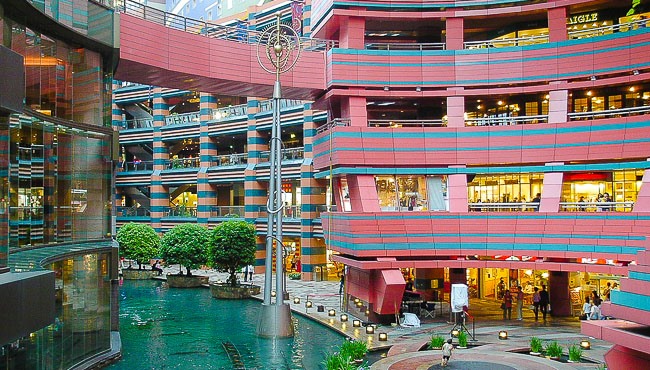 |
| Hakata Canal City. Dubbed "a city within city", the shopping and entertainment complex features over 250 stores, a game arcade, a cinema and numerous restaurants. |

